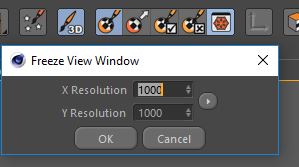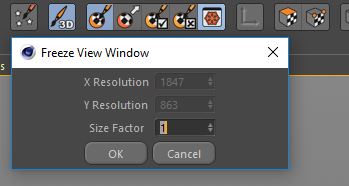Finally had time to release the plugin.
I started this project a long time ago, and its still not perfect but i'm using it with almost every project.
I'm not a scripting wonder, it took me way more time then I wanted, therefor it's for sell, and not for free.
Store
Available for: R18, R19, R20, R21.
Bake renders to textures
Bake the render output directly onto a new mesh, or the same mesh.
Because we are working with a boundary, anything that falls within will be baked.
This even allows you to bake a displacement, or hairs as a texture.
Full tutorial can be watched in this post or here on YouTube:
Its a rather boring video sorry..
In this (3 minute) video make a bake from start to finish, and go over the pro's and con's.
Functionalities are:
- Bake HDRI’s.
- Bake Hires to low res.
- Bake Hires onto itself (Can be done with no limitations).
- Bake Hires onto itself with new UV map.
- Low-res to new low-res with new UV layout.
- Displacement, hairs, textures.
- You get the point..
Limitations are:
- Not good with 90 degree corners.
- Low poly mesh has to be simple and smooth.
- Some hand clean up is necessary. (complex meshes)
Small bug:
- The undo function (Ctrl+Z) doesn't work properly. So please work in a new scene when baking.
Hi-res to low-res

Even when the render does not use UV’s, you can simply transfer the data over to a new map.
Redshift to texture

You can do the same for any Redshift renders by baking them first onto itself with ‘Redshift bakeset’ and to a new model / new uv layout with ‘render to texture’.

You do need to convert it to pollies and use a non hair material, but it works great! Creating alphas is also not a problem. This scene and tutorial video will be included in the download.
Transfer texture to new model

An extreme example is to go from a cube to a sphere, obviously this would look very weird but it's possible. Therefore you can bake literally anything as a HDRI.
Anything to a HDRI

When you bake using a sphere as a boundary you can turn anything into an hdri.
Let me know what you think.
Thanks,
Myosis
PS:
For those who signed up a year ago, a discount code is on its way.



